Lockless Programming in Games Bruce Dawson Principal Software


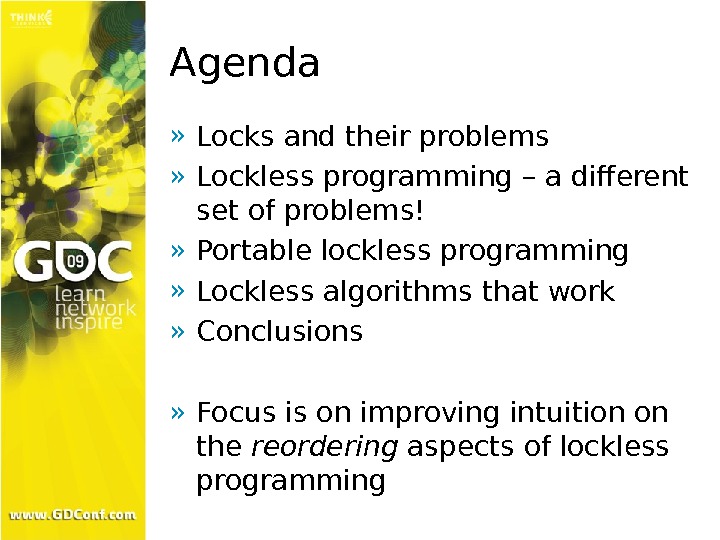






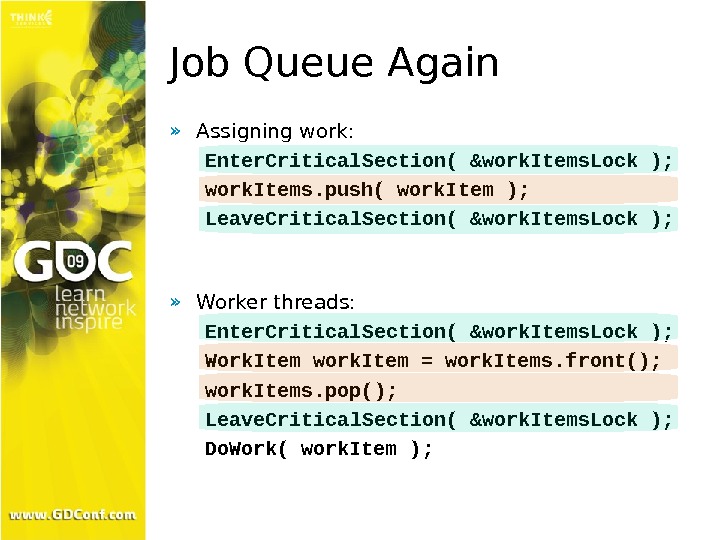
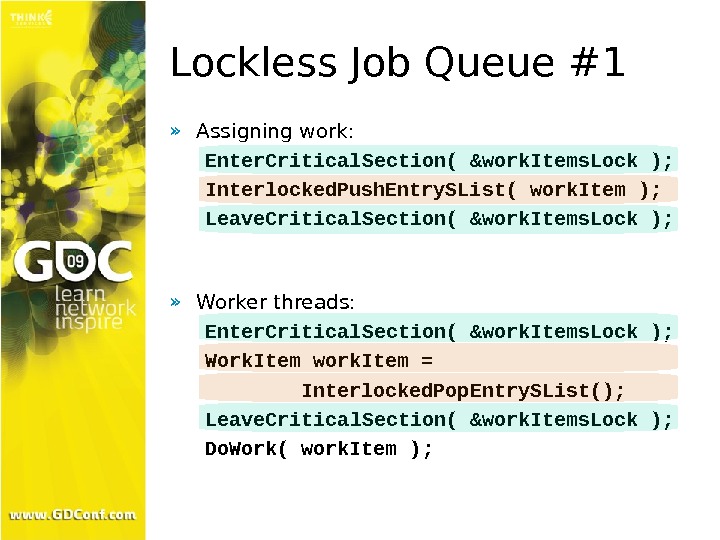
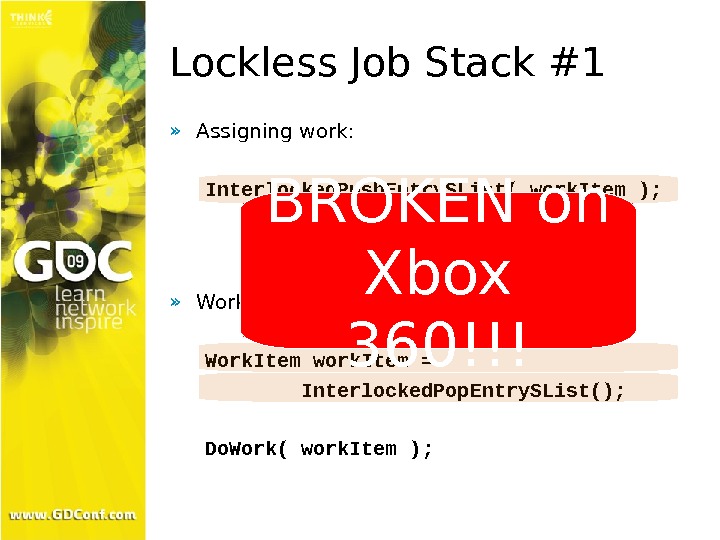

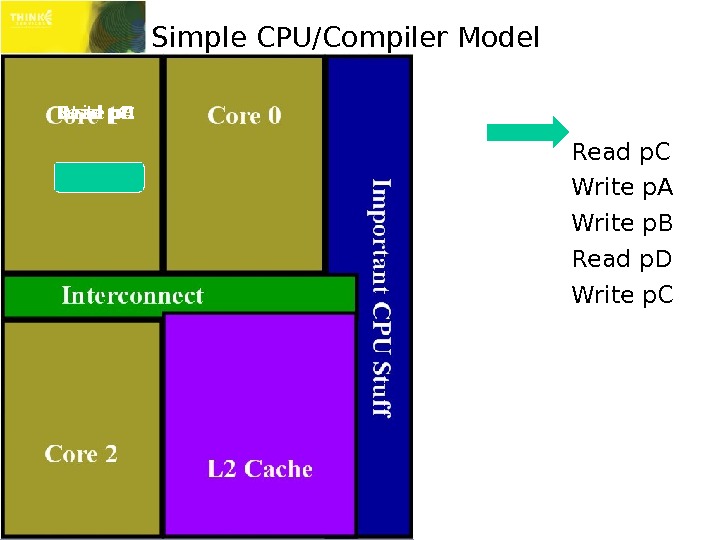

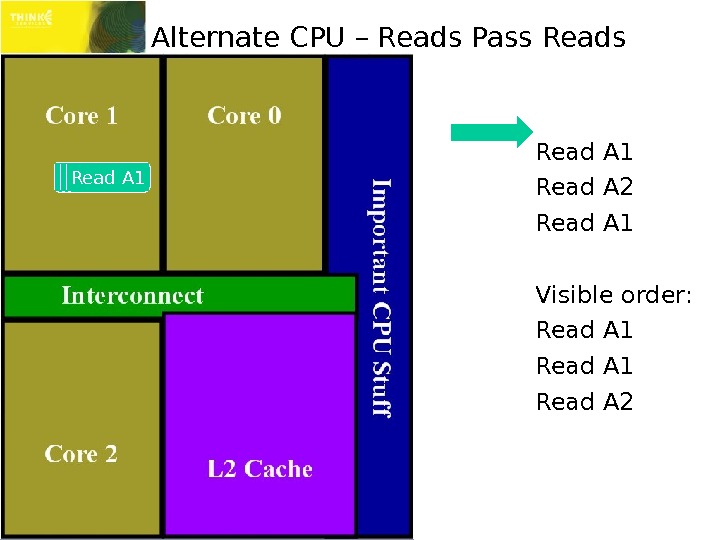
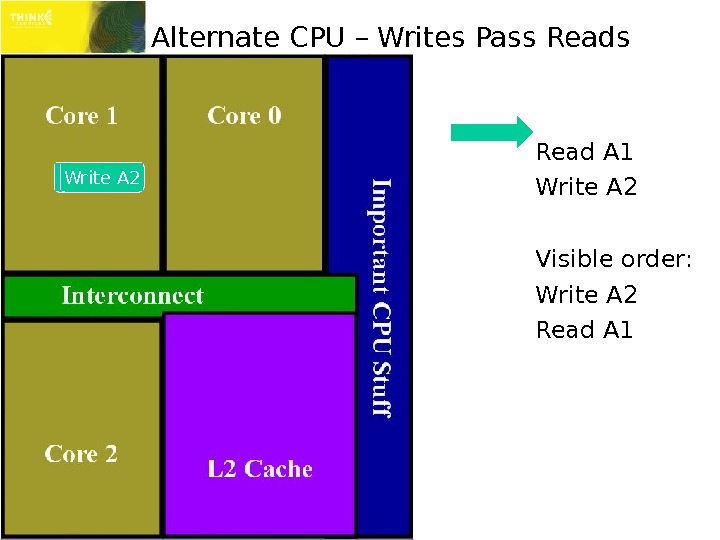


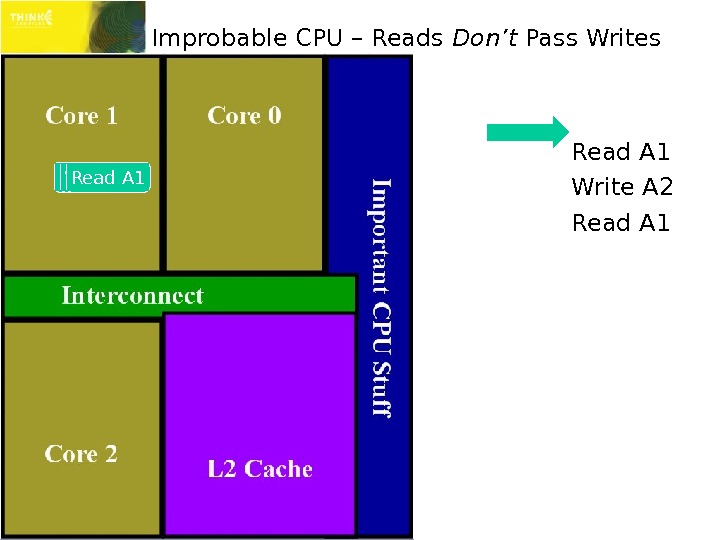
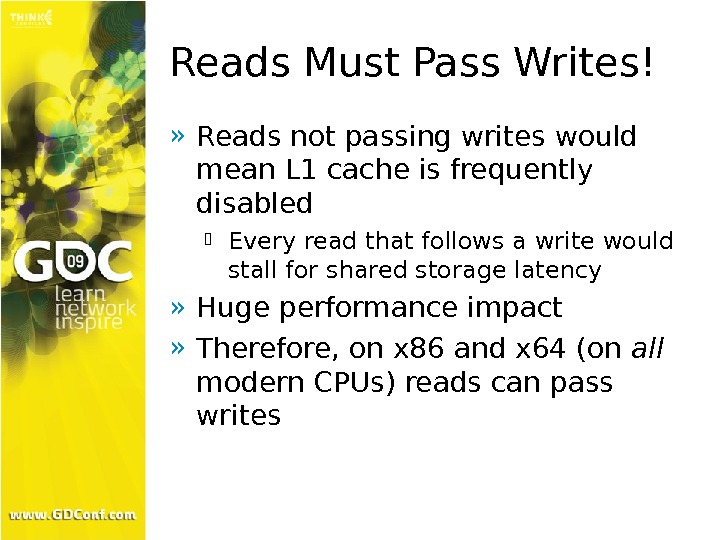
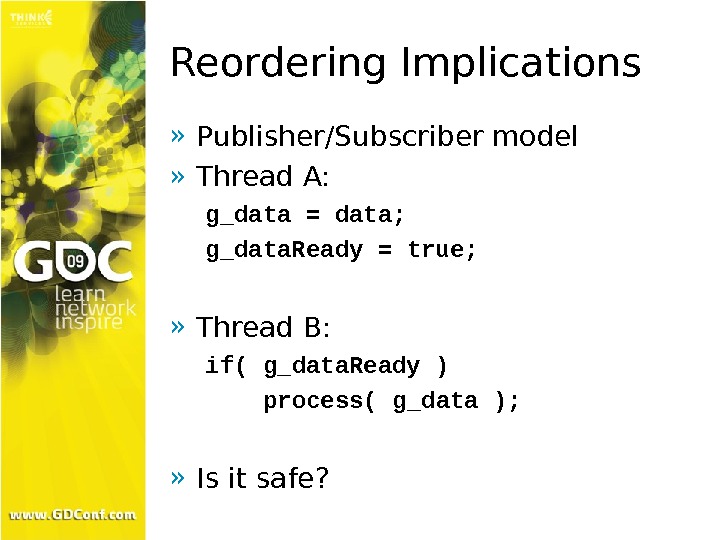

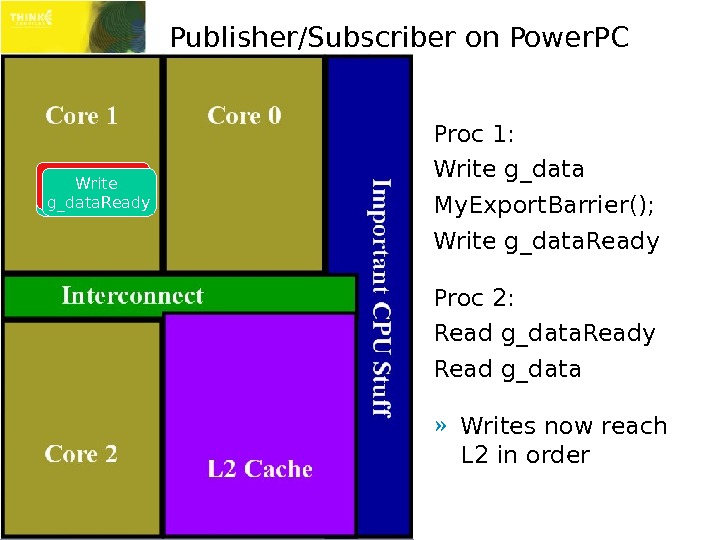
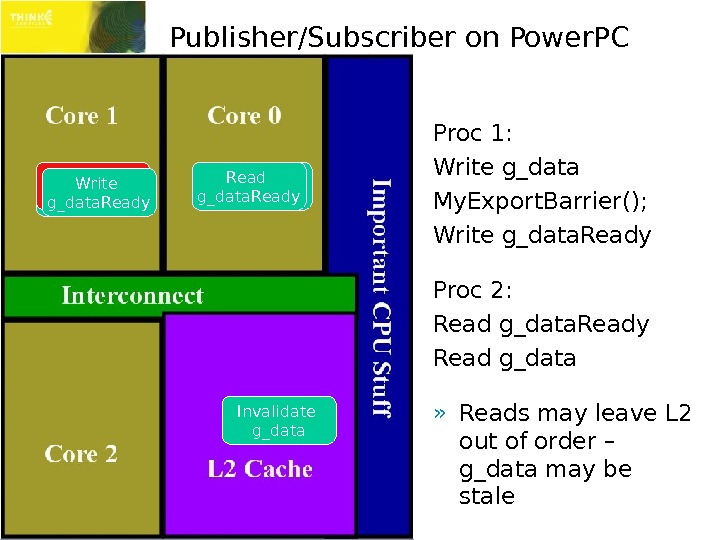
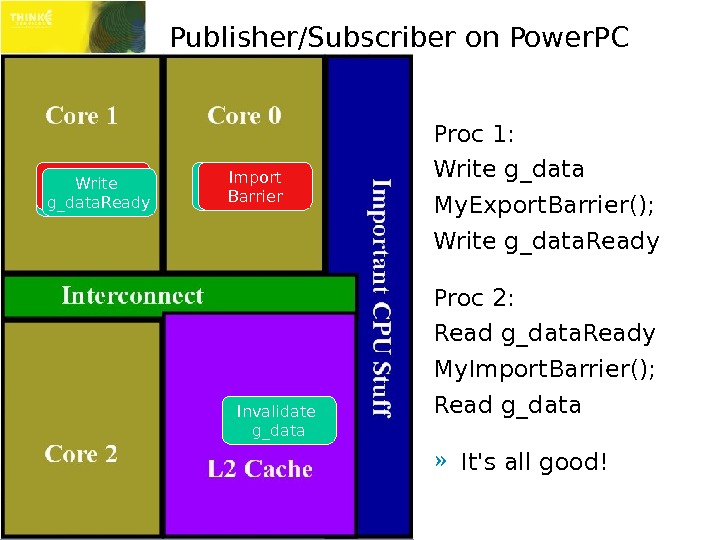
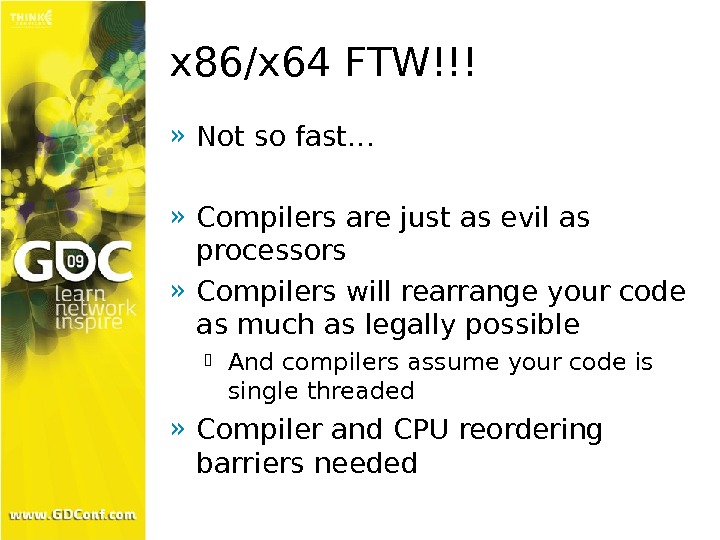

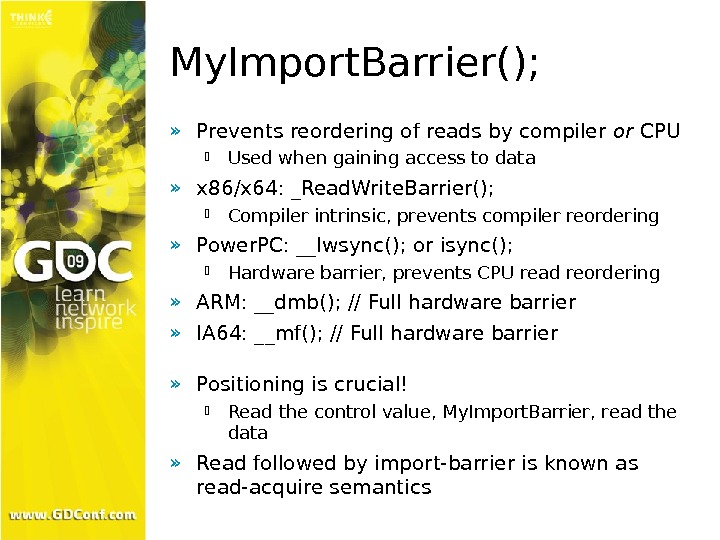
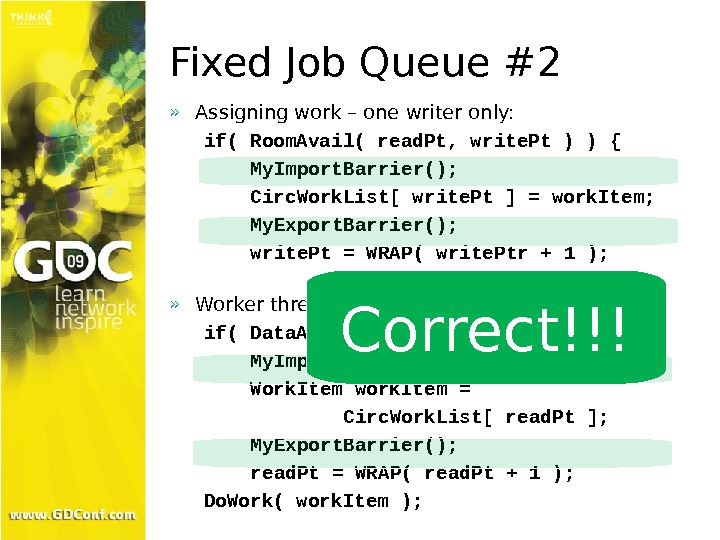

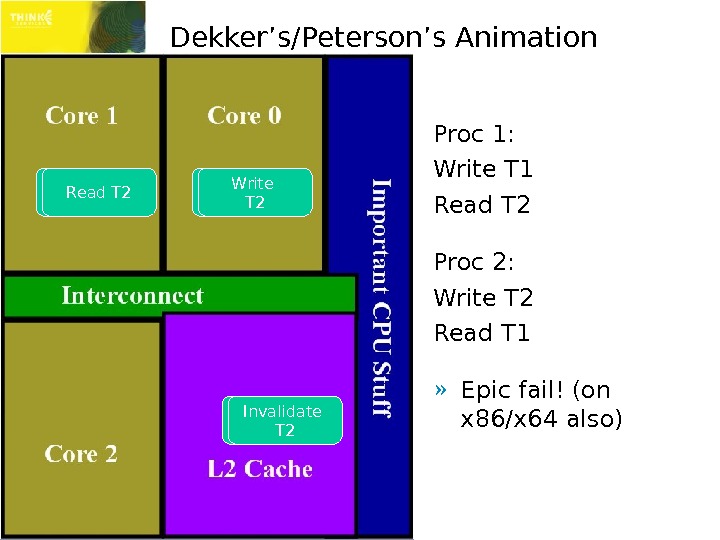
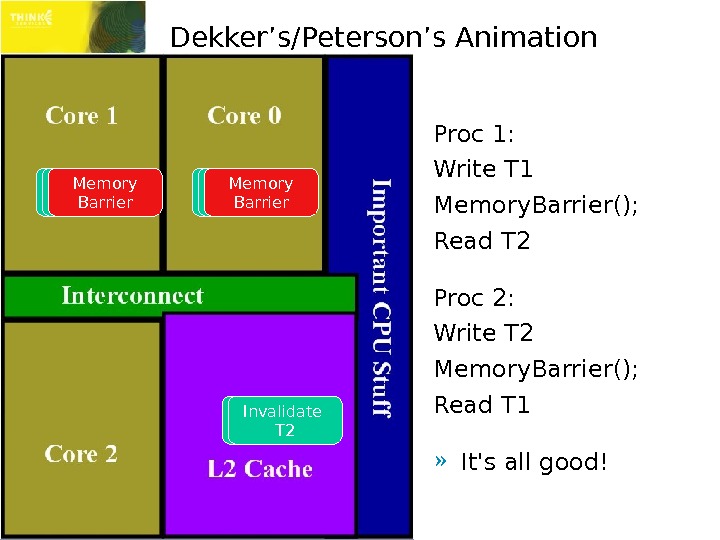


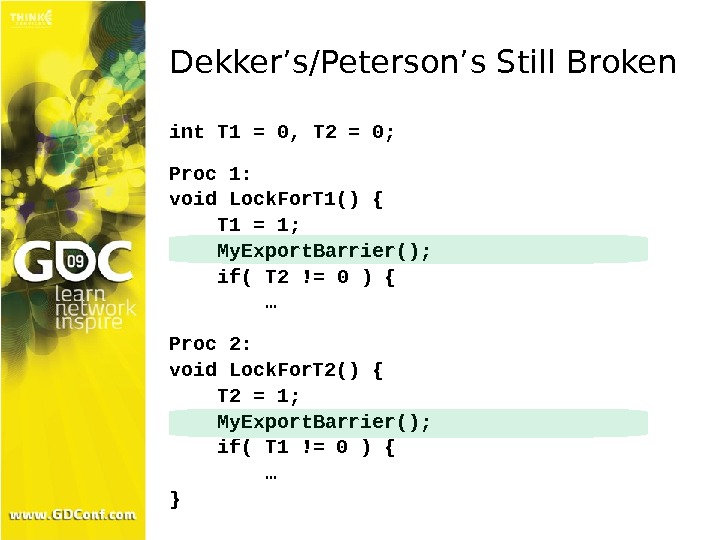
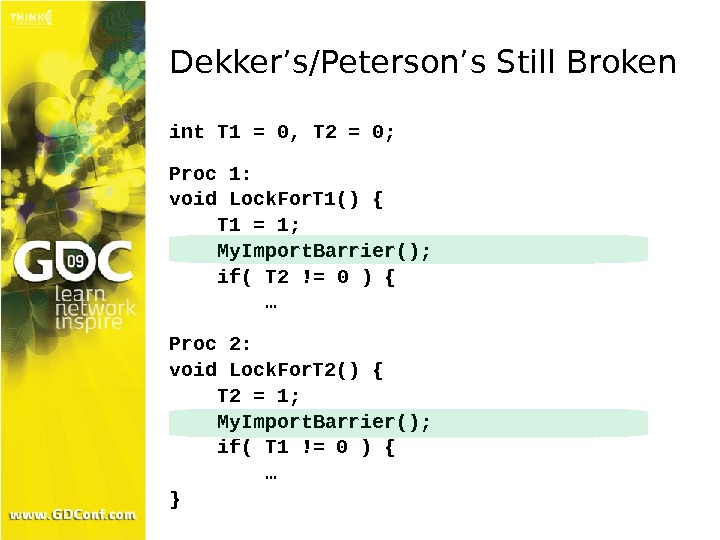

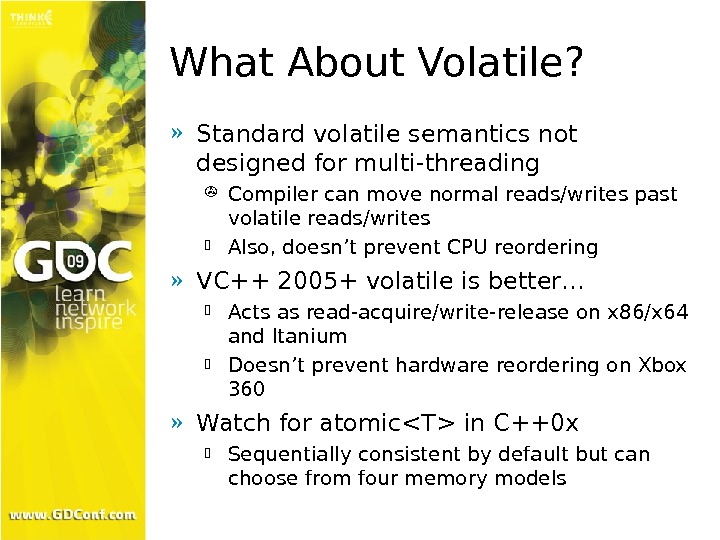
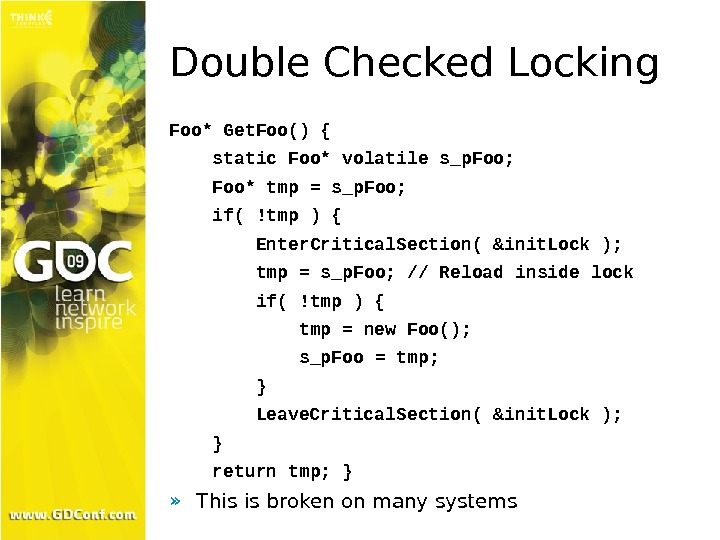
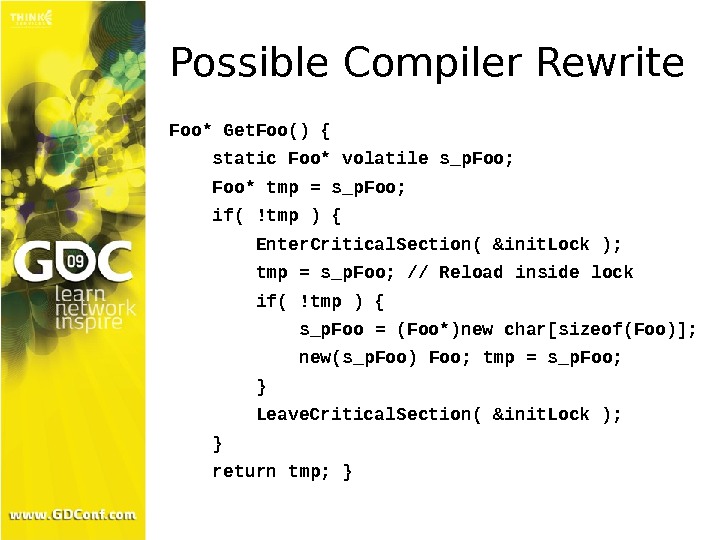

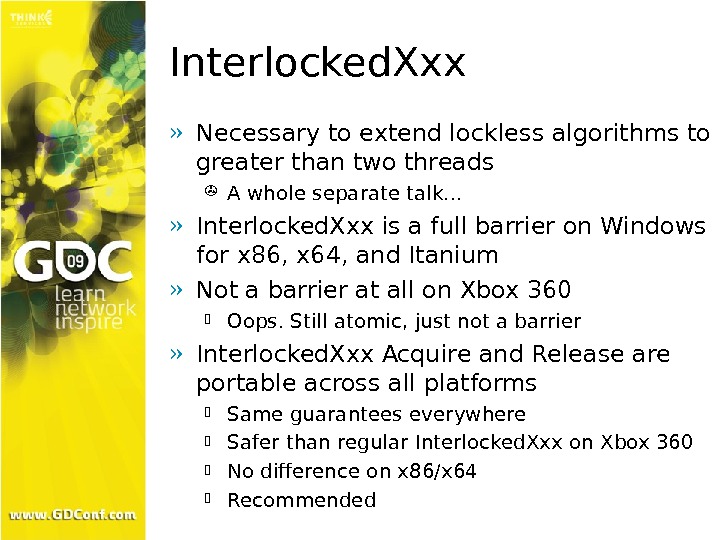
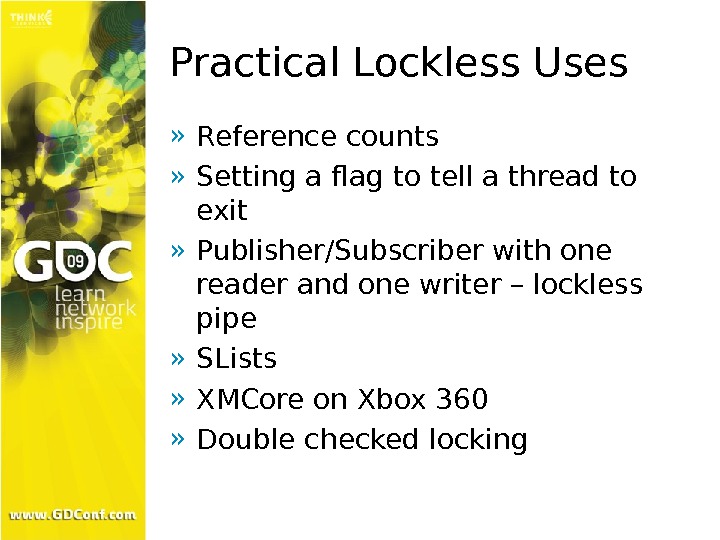

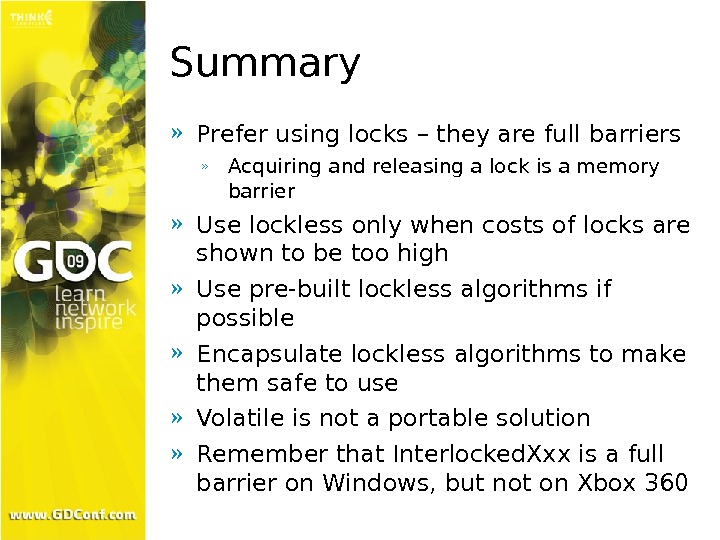



gdc09_dawson_lockless_programming.ppt
- Размер: 3.4 Mегабайта
- Количество слайдов: 49
Описание презентации Lockless Programming in Games Bruce Dawson Principal Software по слайдам

 Lockless Programming in Games Bruce Dawson Principal Software Design Engineer Microsoft Windows Client Performance
Lockless Programming in Games Bruce Dawson Principal Software Design Engineer Microsoft Windows Client Performance
 Agenda » Locks and their problems » Lockless programming – a different set of problems! » Portable lockless programming » Lockless algorithms that work » Conclusions » Focus is on improving intuition on the reordering aspects of lockless programming
Agenda » Locks and their problems » Lockless programming – a different set of problems! » Portable lockless programming » Lockless algorithms that work » Conclusions » Focus is on improving intuition on the reordering aspects of lockless programming
 Cell phones » Please turn off all cell phones, pagers, alarm clocks, crying babies, internal combustion engines, leaf blowers, etc.
Cell phones » Please turn off all cell phones, pagers, alarm clocks, crying babies, internal combustion engines, leaf blowers, etc.
 Mandatory Multi-core Mention » Xbox 360: six hardware threads » PS 3: nine hardware threads » Windows: quad-core PCs for $500 » Multi-threading is mandatory if you want to harness the available power » Luckily it’s easy As long as there is no sharing of non-constant data » Sharing data is tricky Easiest and safest way is to use OS features such as locks and semaphores
Mandatory Multi-core Mention » Xbox 360: six hardware threads » PS 3: nine hardware threads » Windows: quad-core PCs for $500 » Multi-threading is mandatory if you want to harness the available power » Luckily it’s easy As long as there is no sharing of non-constant data » Sharing data is tricky Easiest and safest way is to use OS features such as locks and semaphores
 Simple Job Queue » Assigning work: Enter. Critical. Section( &work. Items. Lock ); work. Items. push( work. Item ); Leave. Critical. Section( &work. Items. Lock ); » Worker threads: Enter. Critical. Section( &work. Items. Lock ); Work. Item work. Item = work. Items. front(); work. Items. pop(); Leave. Critical. Section( &work. Items. Lock ); Do. Work( work. Item );
Simple Job Queue » Assigning work: Enter. Critical. Section( &work. Items. Lock ); work. Items. push( work. Item ); Leave. Critical. Section( &work. Items. Lock ); » Worker threads: Enter. Critical. Section( &work. Items. Lock ); Work. Item work. Item = work. Items. front(); work. Items. pop(); Leave. Critical. Section( &work. Items. Lock ); Do. Work( work. Item );
 The Problem With Locks… » Overhead – acquiring and releasing locks takes time So don’t acquire locks too often » Deadlocks – lock acquisition order must be consistent to avoid these So don’t have very many locks, or only acquire one at a time » Contention – sometimes somebody else has the lock So never hold locks for too long – contradicts point 1 So have lots of little locks – contradicts point 2 » Priority inversions – if a thread is swapped out while holding a lock, progress may stall Changing thread priorities can lead to this Xbox 360 system threads can briefly cause this
The Problem With Locks… » Overhead – acquiring and releasing locks takes time So don’t acquire locks too often » Deadlocks – lock acquisition order must be consistent to avoid these So don’t have very many locks, or only acquire one at a time » Contention – sometimes somebody else has the lock So never hold locks for too long – contradicts point 1 So have lots of little locks – contradicts point 2 » Priority inversions – if a thread is swapped out while holding a lock, progress may stall Changing thread priorities can lead to this Xbox 360 system threads can briefly cause this
 Sensible Reaction » Use locks carefully Don’t lock too frequently Don’t lock for too long Don’t use too many locks Don’t have one central lock » Or, try lockless
Sensible Reaction » Use locks carefully Don’t lock too frequently Don’t lock for too long Don’t use too many locks Don’t have one central lock » Or, try lockless
 Lockless Programming » Techniques for safe multi-threaded data sharing without locks » Pros: May have lower overhead Avoids deadlocks May reduce contention Avoids priority inversions » Cons Very limited abilities Extremely tricky to get right Generally non-portable
Lockless Programming » Techniques for safe multi-threaded data sharing without locks » Pros: May have lower overhead Avoids deadlocks May reduce contention Avoids priority inversions » Cons Very limited abilities Extremely tricky to get right Generally non-portable
 Job Queue Again » Assigning work: Enter. Critical. Section( &work. Items. Lock ); work. Items. push( work. Item ); Leave. Critical. Section( &work. Items. Lock ); » Worker threads: Enter. Critical. Section( &work. Items. Lock ); Work. Item work. Item = work. Items. front(); work. Items. pop(); Leave. Critical. Section( &work. Items. Lock ); Do. Work( work. Item );
Job Queue Again » Assigning work: Enter. Critical. Section( &work. Items. Lock ); work. Items. push( work. Item ); Leave. Critical. Section( &work. Items. Lock ); » Worker threads: Enter. Critical. Section( &work. Items. Lock ); Work. Item work. Item = work. Items. front(); work. Items. pop(); Leave. Critical. Section( &work. Items. Lock ); Do. Work( work. Item );
 Lockless Job Queue #1 » Assigning work: Enter. Critical. Section( &work. Items. Lock ); Interlocked. Push. Entry. SList( work. Item ); Leave. Critical. Section( &work. Items. Lock ); » Worker threads: Enter. Critical. Section( &work. Items. Lock ); Work. Item work. Item = Interlocked. Pop. Entry. SList(); Leave. Critical. Section( &work. Items. Lock ); Do. Work( work. Item );
Lockless Job Queue #1 » Assigning work: Enter. Critical. Section( &work. Items. Lock ); Interlocked. Push. Entry. SList( work. Item ); Leave. Critical. Section( &work. Items. Lock ); » Worker threads: Enter. Critical. Section( &work. Items. Lock ); Work. Item work. Item = Interlocked. Pop. Entry. SList(); Leave. Critical. Section( &work. Items. Lock ); Do. Work( work. Item );
 Lockless Job Stack #1 » Assigning work: Interlocked. Push. Entry. SList( work. Item ); » Worker threads: Work. Item work. Item = Interlocked. Pop. Entry. SList(); Do. Work( work. Item ); BROKEN on Xbox 360!!!
Lockless Job Stack #1 » Assigning work: Interlocked. Push. Entry. SList( work. Item ); » Worker threads: Work. Item work. Item = Interlocked. Pop. Entry. SList(); Do. Work( work. Item ); BROKEN on Xbox 360!!!
 Lockless Job Queue #2 » Assigning work – one writer only: if( Room. Avail( read. Pt, write. Pt ) ) { Circ. Work. List[ write. Pt ] = work. Item; write. Pt = WRAP( write. Pt + 1 ); » Worker thread – one reader only: if( Data. Avail( write. Pt, read. Pt ) ) { Work. Item work. Item = Circ. Work. List[ read. Pt ]; read. Pt = WRAP( read. Pt + 1 ); Do. Work( work. Item ); Correct On Paper. Broken As Executed
Lockless Job Queue #2 » Assigning work – one writer only: if( Room. Avail( read. Pt, write. Pt ) ) { Circ. Work. List[ write. Pt ] = work. Item; write. Pt = WRAP( write. Pt + 1 ); » Worker thread – one reader only: if( Data. Avail( write. Pt, read. Pt ) ) { Work. Item work. Item = Circ. Work. List[ read. Pt ]; read. Pt = WRAP( read. Pt + 1 ); Do. Work( work. Item ); Correct On Paper. Broken As Executed
 Simple CPU/Compiler Model Read p. C Write p. A Write p. B Read p. D Write p. CRead p. C Read p. D Write p. A Write p. B Write p.
Simple CPU/Compiler Model Read p. C Write p. A Write p. B Read p. D Write p. CRead p. C Read p. D Write p. A Write p. B Write p.
 Write p. A Write p. B Write p. C Alternate CPU Model Write p. A Write p. B Write p. C Visible order: Write p. A Write p. C Write p.
Write p. A Write p. B Write p. C Alternate CPU Model Write p. A Write p. B Write p. C Visible order: Write p. A Write p. C Write p.
 Alternate CPU – Reads Pass Read A 1 Read A 2 Read A 1 Visible order: Read A 1 Read A 2 Read A 1 Read A 2 Read
Alternate CPU – Reads Pass Read A 1 Read A 2 Read A 1 Visible order: Read A 1 Read A 2 Read A 1 Read A 2 Read
 Alternate CPU – Writes Pass Read A 1 Write A 2 Visible order: Write A 2 Read A 1 Write
Alternate CPU – Writes Pass Read A 1 Write A 2 Visible order: Write A 2 Read A 1 Write
 Alternate CPU – Reads Pass Writes Read A 1 Write A 2 Read A 1 Visible order: Read A 1 Write A 2 Read A 2 Read A 1 Write A 2 Read A 1 Read
Alternate CPU – Reads Pass Writes Read A 1 Write A 2 Read A 1 Visible order: Read A 1 Write A 2 Read A 2 Read A 1 Write A 2 Read A 1 Read
 Memory Models » «Pass» means «visible before» » Memory models are actually more complex than this May vary for cacheable/non-cacheable, etc. » This only affects multi-threaded lock-free code!!! * Only stores to different addresses can pass each other ** Loads to a previously stored address will load that value x 86/x 64 Power. PC ARM IA 64 store can pass store? No Yes* load can pass load? No Yes Yes store can pass load? No Yes Yes load can pass store? ** Yes Yes
Memory Models » «Pass» means «visible before» » Memory models are actually more complex than this May vary for cacheable/non-cacheable, etc. » This only affects multi-threaded lock-free code!!! * Only stores to different addresses can pass each other ** Loads to a previously stored address will load that value x 86/x 64 Power. PC ARM IA 64 store can pass store? No Yes* load can pass load? No Yes Yes store can pass load? No Yes Yes load can pass store? ** Yes Yes
 Improbable CPU – Reads Don’t Pass Writes Read A 1 Write A 2 Read
Improbable CPU – Reads Don’t Pass Writes Read A 1 Write A 2 Read
 Reads Must Pass Writes! » Reads not passing writes would mean L 1 cache is frequently disabled Every read that follows a write would stall for shared storage latency » Huge performance impact » Therefore, on x 86 and x 64 (on all modern CPUs) reads can pass writes
Reads Must Pass Writes! » Reads not passing writes would mean L 1 cache is frequently disabled Every read that follows a write would stall for shared storage latency » Huge performance impact » Therefore, on x 86 and x 64 (on all modern CPUs) reads can pass writes
 Reordering Implications » Publisher/Subscriber model » Thread A: g_data = data; g_data. Ready = true; » Thread B: if( g_data. Ready ) process( g_data ); » Is it safe?
Reordering Implications » Publisher/Subscriber model » Thread A: g_data = data; g_data. Ready = true; » Thread B: if( g_data. Ready ) process( g_data ); » Is it safe?
 Publisher/Subscriber on Power. PC Proc 1: Write g_data. Ready Proc 2: Read g_data. Ready Read g_data » Writes may reach L 2 out of order. Write g_data. Ready
Publisher/Subscriber on Power. PC Proc 1: Write g_data. Ready Proc 2: Read g_data. Ready Read g_data » Writes may reach L 2 out of order. Write g_data. Ready
 Publisher/Subscriber on Power. PC Proc 1: Write g_data My. Export. Barrier(); Write g_data. Ready Proc 2: Read g_data. Ready Read g_data » Writes now reach L 2 in order. Write g_data Export Barrier Write g_data. Ready
Publisher/Subscriber on Power. PC Proc 1: Write g_data My. Export. Barrier(); Write g_data. Ready Proc 2: Read g_data. Ready Read g_data » Writes now reach L 2 in order. Write g_data Export Barrier Write g_data. Ready
 Publisher/Subscriber on Power. PC Proc 1: Write g_data My. Export. Barrier(); Write g_data. Ready Proc 2: Read g_data. Ready Read g_data » Reads may leave L 2 out of order – g_data may be stale. Write g_data Export Barrier Write g_data. Ready Read g_data. Ready Invalidate g_data
Publisher/Subscriber on Power. PC Proc 1: Write g_data My. Export. Barrier(); Write g_data. Ready Proc 2: Read g_data. Ready Read g_data » Reads may leave L 2 out of order – g_data may be stale. Write g_data Export Barrier Write g_data. Ready Read g_data. Ready Invalidate g_data
 Publisher/Subscriber on Power. PC Proc 1: Write g_data My. Export. Barrier(); Write g_data. Ready Proc 2: Read g_data. Ready My. Import. Barrier(); Read g_data » It’s all good!Write g_data Export Barrier Write g_data. Ready Read g_data. Ready Invalidate g_data. Read g_data Import Barrier
Publisher/Subscriber on Power. PC Proc 1: Write g_data My. Export. Barrier(); Write g_data. Ready Proc 2: Read g_data. Ready My. Import. Barrier(); Read g_data » It’s all good!Write g_data Export Barrier Write g_data. Ready Read g_data. Ready Invalidate g_data. Read g_data Import Barrier
 x 86/x 64 FTW!!! » Not so fast… » Compilers are just as evil as processors » Compilers will rearrange your code as much as legally possible And compilers assume your code is single threaded » Compiler and CPU reordering barriers needed
x 86/x 64 FTW!!! » Not so fast… » Compilers are just as evil as processors » Compilers will rearrange your code as much as legally possible And compilers assume your code is single threaded » Compiler and CPU reordering barriers needed
 My. Export. Barrier » Prevents reordering of writes by compiler or CPU Used when handing out access to data » x 86/x 64: _Read. Write. Barrier(); Compiler intrinsic, prevents compiler reordering » Power. PC: __lwsync(); Hardware barrier, prevents CPU write reordering » ARM: __dmb(); // Full hardware barrier » IA 64: __mf(); // Full hardware barrier » Positioning is crucial! Write the data, My. Export. Barrier, write the control value » Export-barrier followed by write is known as write-release semantics
My. Export. Barrier » Prevents reordering of writes by compiler or CPU Used when handing out access to data » x 86/x 64: _Read. Write. Barrier(); Compiler intrinsic, prevents compiler reordering » Power. PC: __lwsync(); Hardware barrier, prevents CPU write reordering » ARM: __dmb(); // Full hardware barrier » IA 64: __mf(); // Full hardware barrier » Positioning is crucial! Write the data, My. Export. Barrier, write the control value » Export-barrier followed by write is known as write-release semantics
 My. Import. Barrier(); » Prevents reordering of reads by compiler or CPU Used when gaining access to data » x 86/x 64: _Read. Write. Barrier(); Compiler intrinsic, prevents compiler reordering » Power. PC: __lwsync(); or isync(); Hardware barrier, prevents CPU read reordering » ARM: __dmb(); // Full hardware barrier » IA 64: __mf(); // Full hardware barrier » Positioning is crucial! Read the control value, My. Import. Barrier, read the data » Read followed by import-barrier is known as read-acquire semantics
My. Import. Barrier(); » Prevents reordering of reads by compiler or CPU Used when gaining access to data » x 86/x 64: _Read. Write. Barrier(); Compiler intrinsic, prevents compiler reordering » Power. PC: __lwsync(); or isync(); Hardware barrier, prevents CPU read reordering » ARM: __dmb(); // Full hardware barrier » IA 64: __mf(); // Full hardware barrier » Positioning is crucial! Read the control value, My. Import. Barrier, read the data » Read followed by import-barrier is known as read-acquire semantics
 Fixed Job Queue #2 » Assigning work – one writer only: if( Room. Avail( read. Pt, write. Pt ) ) { My. Import. Barrier(); Circ. Work. List[ write. Pt ] = work. Item; My. Export. Barrier(); write. Pt = WRAP( write. Ptr + 1 ); » Worker thread – one reader only: if( Data. Avail( write. Pt, read. Pt ) ) { My. Import. Barrier(); Work. Item work. Item = Circ. Work. List[ read. Pt ]; My. Export. Barrier(); read. Pt = WRAP( read. Pt + 1 ); Do. Work( work. Item ); Correct!!!
Fixed Job Queue #2 » Assigning work – one writer only: if( Room. Avail( read. Pt, write. Pt ) ) { My. Import. Barrier(); Circ. Work. List[ write. Pt ] = work. Item; My. Export. Barrier(); write. Pt = WRAP( write. Ptr + 1 ); » Worker thread – one reader only: if( Data. Avail( write. Pt, read. Pt ) ) { My. Import. Barrier(); Work. Item work. Item = Circ. Work. List[ read. Pt ]; My. Export. Barrier(); read. Pt = WRAP( read. Pt + 1 ); Do. Work( work. Item ); Correct!!!
 Dekker’s/Peterson’s Algorithm int T 1 = 0, T 2 = 0; Proc 1: void Lock. For. T 1() { T 1 = 1; if( T 2 != 0 ) { … Proc 2: void Lock. For. T 2() { T 2 = 1; if( T 1 != 0 ) { … }
Dekker’s/Peterson’s Algorithm int T 1 = 0, T 2 = 0; Proc 1: void Lock. For. T 1() { T 1 = 1; if( T 2 != 0 ) { … Proc 2: void Lock. For. T 2() { T 2 = 1; if( T 1 != 0 ) { … }
 Dekker’s/Peterson’s Animation Proc 1: Write T 1 Read T 2 Proc 2: Write T 2 Read T 1 » Epic fail! (on x 86/x 64 also)Write T 1 Read T 1 Invalidate T 1 Write T 2 Read T 2 Invalidate T
Dekker’s/Peterson’s Animation Proc 1: Write T 1 Read T 2 Proc 2: Write T 2 Read T 1 » Epic fail! (on x 86/x 64 also)Write T 1 Read T 1 Invalidate T 1 Write T 2 Read T 2 Invalidate T
 Dekker’s/Peterson’s Animation Proc 1: Write T 1 Memory. Barrier(); Read T 2 Proc 2: Write T 2 Memory. Barrier(); Read T 1 » It’s all good!Write T 1 Read T 1 Invalidate T 1 Write T 2 Read T 2 Invalidate T 2 Memory Barrier
Dekker’s/Peterson’s Animation Proc 1: Write T 1 Memory. Barrier(); Read T 2 Proc 2: Write T 2 Memory. Barrier(); Read T 1 » It’s all good!Write T 1 Read T 1 Invalidate T 1 Write T 2 Read T 2 Invalidate T 2 Memory Barrier
 Full Memory Barrier » Memory. Barrier(); x 86: __asm xchg Barrier, eax x 64: __faststorefence(); Xbox 360: __sync(); ARM: __dmb(); IA 64: __mf(); » Needed for Dekker’s algorithm, implementing locks, etc. » Prevents all reordering – including preventing reads passing writes » Most expensive barrier type
Full Memory Barrier » Memory. Barrier(); x 86: __asm xchg Barrier, eax x 64: __faststorefence(); Xbox 360: __sync(); ARM: __dmb(); IA 64: __mf(); » Needed for Dekker’s algorithm, implementing locks, etc. » Prevents all reordering – including preventing reads passing writes » Most expensive barrier type
 Dekker’s/Peterson’s Fixed int T 1 = 0, T 2 = 0; Proc 1: void Lock. For. T 1() { T 1 = 1; Memory. Barrier(); if( T 2 != 0 ) { … Proc 2: void Lock. For. T 2() { T 2 = 1; Memory. Barrier(); if( T 1 != 0 ) { … }
Dekker’s/Peterson’s Fixed int T 1 = 0, T 2 = 0; Proc 1: void Lock. For. T 1() { T 1 = 1; Memory. Barrier(); if( T 2 != 0 ) { … Proc 2: void Lock. For. T 2() { T 2 = 1; Memory. Barrier(); if( T 1 != 0 ) { … }
 Dekker’s/Peterson’s Still Broken int T 1 = 0, T 2 = 0; Proc 1: void Lock. For. T 1() { T 1 = 1; My. Export. Barrier(); if( T 2 != 0 ) { … Proc 2: void Lock. For. T 2() { T 2 = 1; My. Export. Barrier(); if( T 1 != 0 ) { … }
Dekker’s/Peterson’s Still Broken int T 1 = 0, T 2 = 0; Proc 1: void Lock. For. T 1() { T 1 = 1; My. Export. Barrier(); if( T 2 != 0 ) { … Proc 2: void Lock. For. T 2() { T 2 = 1; My. Export. Barrier(); if( T 1 != 0 ) { … }
 Dekker’s/Peterson’s Still Broken int T 1 = 0, T 2 = 0; Proc 1: void Lock. For. T 1() { T 1 = 1; My. Import. Barrier(); if( T 2 != 0 ) { … Proc 2: void Lock. For. T 2() { T 2 = 1; My. Import. Barrier(); if( T 1 != 0 ) { … }
Dekker’s/Peterson’s Still Broken int T 1 = 0, T 2 = 0; Proc 1: void Lock. For. T 1() { T 1 = 1; My. Import. Barrier(); if( T 2 != 0 ) { … Proc 2: void Lock. For. T 2() { T 2 = 1; My. Import. Barrier(); if( T 1 != 0 ) { … }
 Dekker’s/Peterson’s Still Broken int T 1 = 0, T 2 = 0; Proc 1: void Lock. For. T 1() { T 1 = 1; My. Export. Barrier(); My. Import. Barrier(); if( T 2 != 0 ) { … Proc 2: void Lock. For. T 2() { T 2 = 1; My. Export. Barrier(); My. Import. Barrier(); if( T 1 != 0 ) { … }
Dekker’s/Peterson’s Still Broken int T 1 = 0, T 2 = 0; Proc 1: void Lock. For. T 1() { T 1 = 1; My. Export. Barrier(); My. Import. Barrier(); if( T 2 != 0 ) { … Proc 2: void Lock. For. T 2() { T 2 = 1; My. Export. Barrier(); My. Import. Barrier(); if( T 1 != 0 ) { … }
 What About Volatile? » Standard volatile semantics not designed for multi-threading Compiler can move normal reads/writes past volatile reads/writes Also, doesn’t prevent CPU reordering » VC++ 2005+ volatile is better… Acts as read-acquire/write-release on x 86/x 64 and Itanium Doesn’t prevent hardware reordering on Xbox 360 » Watch for atomic in C++0 x Sequentially consistent by default but can choose from four memory models
What About Volatile? » Standard volatile semantics not designed for multi-threading Compiler can move normal reads/writes past volatile reads/writes Also, doesn’t prevent CPU reordering » VC++ 2005+ volatile is better… Acts as read-acquire/write-release on x 86/x 64 and Itanium Doesn’t prevent hardware reordering on Xbox 360 » Watch for atomic in C++0 x Sequentially consistent by default but can choose from four memory models
 Double Checked Locking Foo* Get. Foo() { static Foo* volatile s_p. Foo; Foo* tmp = s_p. Foo; if( !tmp ) { Enter. Critical. Section( &init. Lock ); tmp = s_p. Foo; // Reload inside lock if( !tmp ) { tmp = new Foo(); s_p. Foo = tmp; } Leave. Critical. Section( &init. Lock ); } return tmp; } » This is broken on many systems
Double Checked Locking Foo* Get. Foo() { static Foo* volatile s_p. Foo; Foo* tmp = s_p. Foo; if( !tmp ) { Enter. Critical. Section( &init. Lock ); tmp = s_p. Foo; // Reload inside lock if( !tmp ) { tmp = new Foo(); s_p. Foo = tmp; } Leave. Critical. Section( &init. Lock ); } return tmp; } » This is broken on many systems
 Possible Compiler Rewrite Foo* Get. Foo() { static Foo* volatile s_p. Foo; Foo* tmp = s_p. Foo; if( !tmp ) { Enter. Critical. Section( &init. Lock ); tmp = s_p. Foo; // Reload inside lock if( !tmp ) { s_p. Foo = (Foo*)new char[sizeof(Foo)]; new(s_p. Foo) Foo; tmp = s_p. Foo; } Leave. Critical. Section( &init. Lock ); } return tmp; }
Possible Compiler Rewrite Foo* Get. Foo() { static Foo* volatile s_p. Foo; Foo* tmp = s_p. Foo; if( !tmp ) { Enter. Critical. Section( &init. Lock ); tmp = s_p. Foo; // Reload inside lock if( !tmp ) { s_p. Foo = (Foo*)new char[sizeof(Foo)]; new(s_p. Foo) Foo; tmp = s_p. Foo; } Leave. Critical. Section( &init. Lock ); } return tmp; }
 Double Checked Locking Foo* Get. Foo() { static Foo* volatile s_p. Foo; Foo* tmp = s_p. Foo; My. Import. Barrier(); if( !tmp ) { Enter. Critical. Section( &init. Lock ); tmp = s_p. Foo; // Reload inside lock if( !tmp ) { tmp = new Foo(); My. Export. Barrier(); s_p. Foo = tmp; } Leave. Critical. Section( &init. Lock ); } return tmp; } » Fixed
Double Checked Locking Foo* Get. Foo() { static Foo* volatile s_p. Foo; Foo* tmp = s_p. Foo; My. Import. Barrier(); if( !tmp ) { Enter. Critical. Section( &init. Lock ); tmp = s_p. Foo; // Reload inside lock if( !tmp ) { tmp = new Foo(); My. Export. Barrier(); s_p. Foo = tmp; } Leave. Critical. Section( &init. Lock ); } return tmp; } » Fixed
 Interlocked. Xxx » Necessary to extend lockless algorithms to greater than two threads A whole separate talk… » Interlocked. Xxx is a full barrier on Windows for x 86, x 64, and Itanium » Not a barrier at all on Xbox 360 Oops. Still atomic, just not a barrier » Interlocked. Xxx Acquire and Release are portable across all platforms Same guarantees everywhere Safer than regular Interlocked. Xxx on Xbox 360 No difference on x 86/x 64 Recommended
Interlocked. Xxx » Necessary to extend lockless algorithms to greater than two threads A whole separate talk… » Interlocked. Xxx is a full barrier on Windows for x 86, x 64, and Itanium » Not a barrier at all on Xbox 360 Oops. Still atomic, just not a barrier » Interlocked. Xxx Acquire and Release are portable across all platforms Same guarantees everywhere Safer than regular Interlocked. Xxx on Xbox 360 No difference on x 86/x 64 Recommended
 Practical Lockless Uses » Reference counts » Setting a flag to tell a thread to exit » Publisher/Subscriber with one reader and one writer – lockless pipe » SLists » XMCore on Xbox 360 » Double checked locking
Practical Lockless Uses » Reference counts » Setting a flag to tell a thread to exit » Publisher/Subscriber with one reader and one writer – lockless pipe » SLists » XMCore on Xbox 360 » Double checked locking
 Barrier Summary » My. Export. Barrier when publishing data, to prevent write reordering » My. Import. Barrier when acquiring data, to prevent read reordering » Memory. Barrier to stop all reordering, including reads passing writes » Identify where you are publishing/releasing and where you are subscribing/acquiring
Barrier Summary » My. Export. Barrier when publishing data, to prevent write reordering » My. Import. Barrier when acquiring data, to prevent read reordering » Memory. Barrier to stop all reordering, including reads passing writes » Identify where you are publishing/releasing and where you are subscribing/acquiring
 Summary » Prefer using locks – they are full barriers » Acquiring and releasing a lock is a memory barrier » Use lockless only when costs of locks are shown to be too high » Use pre-built lockless algorithms if possible » Encapsulate lockless algorithms to make them safe to use » Volatile is not a portable solution » Remember that Interlocked. Xxx is a full barrier on Windows, but not on Xbox
Summary » Prefer using locks – they are full barriers » Acquiring and releasing a lock is a memory barrier » Use lockless only when costs of locks are shown to be too high » Use pre-built lockless algorithms if possible » Encapsulate lockless algorithms to make them safe to use » Volatile is not a portable solution » Remember that Interlocked. Xxx is a full barrier on Windows, but not on Xbox
 References » Intel memory model documentation in Intel® 64 and IA-32 Architectures Software Developer’s Manual Volume 3 A: System Programming Guide http: //download. intel. com/design/processor/manuals/253668. pdf » AMD «Multiprocessor Memory Access Ordering» http: //www. amd. com/us-en/assets/content_type/white_papers_an d_tech_docs/24593. pdf » PPC memory model explanation http: //www. ibm. com/developerworks/eserver/articles/powerpc. ht ml » Lockless Programming Considerations for Xbox 360 and Microsoft Windows http: //msdn. microsoft. com/en-us/library/bb 310595. aspx » Perils of Double Checked Locking http: //www. aristeia. com/Papers/DDJ_Jul_Aug_2004_revised. pdf » Java Memory Model Cookbook http: //g. oswego. edu/dl/jmm/cookbook. html
References » Intel memory model documentation in Intel® 64 and IA-32 Architectures Software Developer’s Manual Volume 3 A: System Programming Guide http: //download. intel. com/design/processor/manuals/253668. pdf » AMD «Multiprocessor Memory Access Ordering» http: //www. amd. com/us-en/assets/content_type/white_papers_an d_tech_docs/24593. pdf » PPC memory model explanation http: //www. ibm. com/developerworks/eserver/articles/powerpc. ht ml » Lockless Programming Considerations for Xbox 360 and Microsoft Windows http: //msdn. microsoft. com/en-us/library/bb 310595. aspx » Perils of Double Checked Locking http: //www. aristeia. com/Papers/DDJ_Jul_Aug_2004_revised. pdf » Java Memory Model Cookbook http: //g. oswego. edu/dl/jmm/cookbook. html
 Questions? » bdawson@microsoft. com
Questions? » bdawson@microsoft. com
 Feedback forms » Please fill out feedback forms
Feedback forms » Please fill out feedback forms
